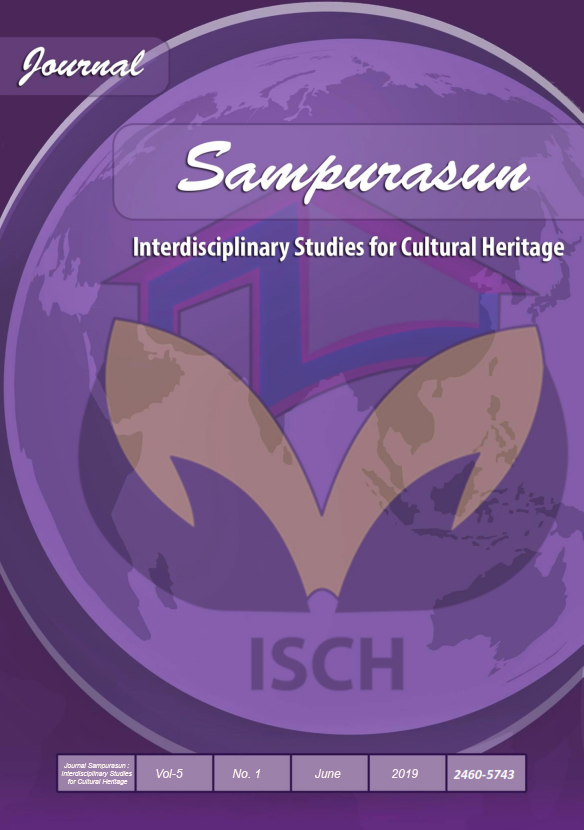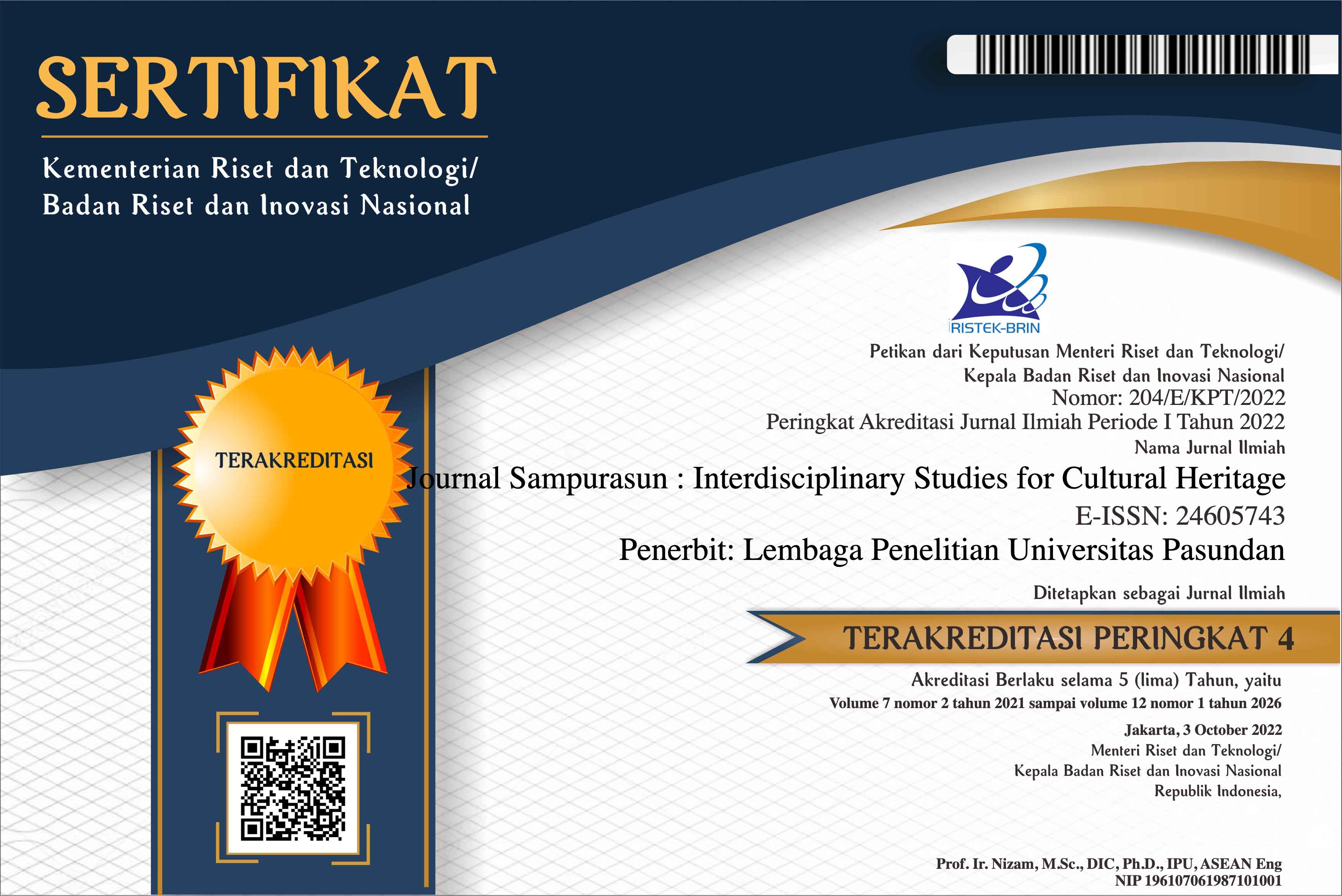LOOKING FOR ALTERNATIVE ONLINE PROMOTION STRATEGY IN VIRTUAL STORE BALERINA BEAUTY SHOP: AN APPLICATION OF ANALYTIC HIERARCHY PROCESS
DOI:
https://doi.org/10.23969/sampurasun.v5i02.1534Keywords:
Online promotion strategy, alternative strategy, virtual store-front, analytic hierarchy process (AHP)Abstract
Technology through the internet changes human lifestyle and culture. Ease access to the internet is major support for developing the e-commerce industry. However, in some online companies, not only the internet but also other supporting factors are needed to grow, such as alternative marketing strategies. In the case of Balerina beauty shop, the decreasing number of its visitors for months became the main concern. The company chooses promotional focus as the strategy to deal with visitor problems. Previous research in e-business and analytical hierarchy processes (AHP) issues have not been a concern to promotion strategy, so this study aims to explore the application of analytical hierarchy processes (AHP) in virtual stores and find elements that support online promotion strategies. This study uses a qualitative and quantitative approach. The results of the study indicate that the company has implemented an online promotion strategy such as web promotion with the CPC system, price discounts, social networking systems, smartphone applications, and online group discussions. Actors who play a main role in the company when making strategic decisions are directors, marketing managers, and IT departments. The marketing strategy of the company purposes to increase sales, consumers' awareness, competition, and information dissemination. AHP results show that alternative strategies for the progress of the company, based on priority ranking, are markets, search engine optimization, web advertising, and direct mail. For further development in performance, giving priority to the development of IT skills can be applied.
Downloads
References
Angiopora, M. (2001). Dasar-dasar manajemen pemasaran. Jakarta: PT. Raja Grafindo Persada.
Bauer, R. A., Collar, E., & Tang, V. (1992). The Silverlake project. New York: Oxford University Press.
Belch, G. E., & Belch, M. A. (2001). An integrated marketing communication perspective. New York: McGraw Hill.
Büyüközkan, G. (2004). Multi‐criteria decision making for e‐marketplace selection. Internet Research, 14(2), 139–154.
Chen, J.V. & Yen, D.C & Pornpriphet, W. & Widjaja, A. E. (2014). E-commerce web site loyalty: A cross cultural comparison. Inf Syst Front.
Chen, M.K. & Wang, S. (2010). The critical factors of success for information service industry in developing international market: Using analytic hierarchy process (AHP) approach. Expert Systems with Applications, 37, 694–704.
Chen, P.-Y., & Forman, C. (2006). can vendors influence switching costs and compatibility in an environment with open Standards? MIS Quarterly, 30(SI), 541–562.
Cravens, D. W., Piercy, N. F., & Baldauf, A. (2009). Management framework guiding strategic thinking in rapidly changing markets. Journal of Marketing Management, 25(1–2), 31–49.
Fu, H., Ho, Y., Chen, R. C.Y., Chang, T., & Chien, P. (2006). Factors affecting the adoption of electronic marketplaces: A fuzzy AHP analysis. International Journal of Operations & Production Management, 26(12), 1301–1324.
Ghodsypour, S. H., & O’Brien, C. (1998). A decision support system for supplier selection using an integrated analytical hierarchy process and linear programming. International Journal of Production Economics, 56–67(1), 199–212.
Gretzel, U. and Yoo, K. (2014). The Routlege Handbook of Tourism Marketing (pp. 491–504). New York: Routlege.
Jia, F., Orzes, G., Sartor, M., Nassimbeni, G. (2017). Global sourcing strategy and structure: towards a conceptual framework. International Journal of Operations & Production Management, 37(7). https://doi.org/10.1108/ IJOPM-09-2015-0549.
Kalaignanam, K., Kushwaha, T., & Rajavi, K. (2018). How Does Web Personalization Create Value for Online Retailers ? Lower Cash Flow Volatility or Enhanced Cash Flows. Journal of Retailing, 94(3), 265–279. https://doi.org/10.1016/j.jretai.2018.05.001
Kotler, P., & Armstrong, G. (2008). Prinsip-prinsip Pemasaran. Jakarta: Erlangga.
Kresh H., Laible A., Lam M., R. M. (2018). Online Advertising: Creating a Relationship Between Businesses and Consumers. International Marketing and Management Research.
Kumar, A., Luthra, S., Kumar, D., Mehta, R., Chaudhary, N., & Bhatia, S. (2017). Measuring and improving customer retention at authorised automobile workshops after free services. Journal of Retailing and Consumer Services, 39(2017), 93–102. https://doi.org/10.1016/j.jretconser.2017.07.007
Lee, Y. & Kozar, K. A. (2006). Investigating the effect of website quality on e-business success: An analytic hierarchy process (AHP) approach. Decision Support Systems, 42, 1383–1401.
Marimin. (2004). Teknik dan Aplikasi Pengambilan Keputusan Kriteria Majemuk. Jakarta: Grasindo.
Mat Dangi, M. R., Ismail, A. H., Johari, R. J., & Md. Noor, R. (2018). SME’s Internationalization Initiatives: Business & Growth Strategy, ICT and Technology. International Journal of Accounting, Finance and Business, 3(12), 63–75.
Mintzber, H. (1987). The Strategy Concept I: Five Ps For Strategy. California Management Review, (Fall).
Misra, S., & Panda, R. K. (2017). Environmental consciousness and brand equity an impact assessment using analytical hierarchy process (AHP). Marketing Intelligence & Planning, 35(1), 40–61.
Morissan. (2007). Periklanan dan Komunikasi Pemasaran Terpadu. Jakarta: Ramdina Prakarsa.
Ngai, E. W. . (2003). Selection of web sites for online advertising using the AHP. Information & Management, 40, 233–242.
Nielsen. (2012). Consumer Trust in Online, Social and Mobile Advertising Grows. Retrieved February 5, 2019, from https://goo.gl/C34AUV
Oetomo, B. S. D. (2002). E-education: Konsep, teknologi dan aplikasi internet pendidikan. Yogyakarta: Andi.
Omkarprasad, S. V., & Kumar, S. (2006). Analytic hierarchy process: an overview of applications. European Journal of Operational Research, 16(9), 1–29.
Powel, A. & Matthews, S. (2006). Electrical Conductivity Vigor Test: Physiological Basis and Use. ISTA News Bulletin, 131, 32–35.
Proctor, T. (2008). Strategic marketing: an introduction. London and New York: Routledge.
Saaty, T. L. (1991). Pengambilan Keputusan Bagi Para Pemimpin Proses Hirarki Analitik Untuk Pengambilan Keputusan dalam Situasi yang Kompleks. Jakarta: IPPM dan PT. Pustaka Binama Pressindo.
Saaty, T. L. (2008). Decision making with the analytic hierarchy process. Int. J. Serv. Sci, 1(1), 83–98.
Sharma, G. & Lijuan, W. (2015). The effects of online service quality of e-commerce Websites on user satisfaction. The Electronic Library, 33(3), 468–485.
Sibero, A. (2011). Kitab Suci Web Programing. Yogyakarta: Media Kom.
Torres, J.A.S, & Arroyo-Cañada, F. (2017). Building brand loyalty in e-commerce of fashion lingerie. Journal of Fashion Marketing and Management: An International Journal, 21(1), 103–114.
Turban, E., Aronson, J. E., & Liang, T. P. (2005). Decision Support Systems ang Intelligent Systems. Prentice Hall.
Vargas, L. (1990). An overview of analytic hierarchy process: its applications. European Journal of Operational Research, 48(1), 2–8.
Downloads
Published
Issue
Section
License
Copyright Notice
Authors should not withdraw their submitted papers because the withdrawal wastes voluntary works devoted by an associate editor and reviewers. But, we accept the withdrawal of a submitted paper if authors have unavoidable reasons. In the event that a manuscript is to be withdrawn from submission to Sampurasun Journal, a letter must be sent to the editorial office requesting withdrawal by e-mail (sampurasunjournal@unpas.ac.id) with its scanned PDF file, before the notification of acceptance for publication.
The withdraw request letter must include the following information. Paper ID, Paper title, Authors names, Reason why the paper must be withdrawn, and Date and signatures of all the authors (or signature of the contact author).
If only the contact author signs the letter, he/she must obtain the agreement of the withdrawal from all the other authors and the letter must include the description that all the other authors agreed the withdrawal. The journal will not withdraw a manuscript from peer review until such a letter has been received. Authors must not assume their manuscript has been withdrawn until they have received appropriate notification from the editorial office. Withdrawal of a manuscript subsequent to acceptance for publication will only be granted in the most exceptional of circumstances.
After the paper is accepted for publication, the withdrawal is not permitted in principle. The authors must always pay the charge even if the withdrawal is permitted. Any request of withdrawal that does not follow the above procedure is treated as invalid. If illegal submission, e.g., plagiarized or duplicate submission, is found for a paper, the withdrawal of the paper will never be permitted and the authors will be punished based on the rule. It is not acceptable practice to withdraw a manuscript in the event of acceptance at another journal. This constitutes dual submission. The editorial office of the other journal will be notified of your actions. In such circumstances Sampurasun ISCH may chose to impose appropriate punitive action subject.
Withdrawal Penalty
Author is not allowed to withdraw submitted manuscripts, because the withdrawal is waste of valuable resources that editors and referees spent a great deal of time processing submitted manuscript, money and works invested by the publisher. If author still requests withdrawal of his/her manuscript when the manuscript is still in the peer-reviewing process, author will be punished with paying $200 per manuscript, as withdrawal penalty to the publisher. However, it is unethical to withdraw a submitted manuscript from one journal if accepted by another journal. The withdrawal of manuscript after the manuscript is accepted for publication, author will be punished by paying US$500 per manuscript. Withdrawal of manuscript is only allowed after withdrawal penalty has been fully paid to the Publisher. If author don't agree to pay the penalty, the author and his/her affiliation will be blacklisted for publication in this journal. Even, his/her previously published articles will be removed from our online system.


















